Bryan Pearson's Blog, page 6
October 25, 2018
7 Scary Retail Trends As We Head Into The Holidays
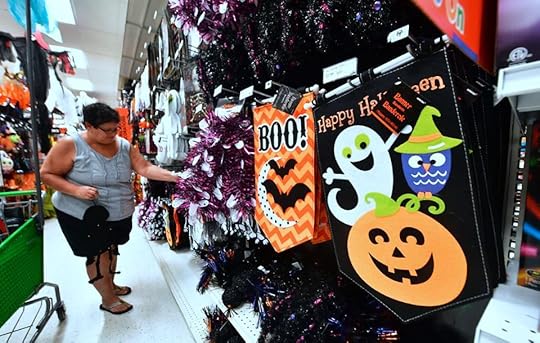
Halloween candy has yet to be doled out, but the ghost of Christmas present is already upon us in the form of holiday spending predictions. And while the outlook is aglow, some underlying findings could come back to haunt retailers for seasons to come.
Holiday spending is projected to rise by 4.5% this season, to $807 billion (including food and beverages), according to the International Council of Shopping Centers. That alone suggests retailers will have to work harder to keep shoppers happy — and interested. There are simply too many places to spend holiday dollars, and too many physical and online stores selling the same things, for retailers to expect lasting success through the same-old, same-old strategy of price competition. Those that do are likely to blend into a cauldron of promotions, extended hours and “one-time-only” commerce.
Several recent surveys have produced figures that can be viewed as ominous for retailers if they do not prepare to meet shopper demand and behavioral trends. Here are seven.
1. Blackout concerns. Shoppers generally have long had mixed emotions about Black Friday, and these feelings have been exacerbated by the rise in sales specials on Thanksgiving Day. This year is no different, although indications are shoppers may be growing wearier of Black Friday. Less than half believe the day after Thanksgiving is the best day to get deals, states a holiday report by the advertising-technology provider OpenX and The Harris Poll. Six in ten shoppers find Black Friday overwhelming and do not plan to participate.
2. Hire love. Retailers are expected to hire as many as 650,000 seasonal workers this year, according to the National Retail Federation. That represents an increase of 10% over 2017 and occurs at a time of low unemployment, triggering heated competition for limited talent. This could place retailers in a vulnerable position. How favorable is the employee pool for retail? Will merchants have time to train all of these new hires properly to ensure positive customer experiences and steady sales in 2019?
3. Wheeling and dealing. Lots of shoppers still plan to shop in physical stores, turning up the heat among retailers to ensure their seasonal workers can provide positive experiences. Nearly 70% of shoppers plan to holiday shop at department stores, according to RetailMeNot’s annual holiday guide. And when they are in those stores searching for holiday gifts, 87% of these shoppers said they expect to find deals.
4. Buying and flying. Fewer shoppers are brand-loyal, in part because the same products and labels are readily available in more places, from dollar stores to warehouse clubs. Just 17% of shoppers described themselves as “fiercely loyal” to a handful of brands, according to a recent report by InMoment, a customer experience consultant. Nearly one-quarter of shoppers said they tend to make purchasing decisions in the moment, depending on new products and services, price, promotions and recommendations.
5. The weight of the wait. When it comes to the service or experience consumers most want in their in-store shopping trips, it’s the ability to get out — fast. Nearly half of shoppers (47%) said they prefer to check out without having to wait in line, states a report by Alliance Data, a leading global provider of data-driven marketing and loyalty solutions. The emergence of checkout-free stores, such as Amazon Go, is leading to broader acceptance of the concept among consumers, and pressuring more retailers to find ways to eliminate checkout friction, especially during holiday rush time.
6. That shipping’s saled. Shoppers also expect low-cost or no-cost shipping. The same Alliance Data report reveals that 56% of online shoppers prefer free shipping at checkout; 91% said free shipping had at least some influence on their decision to buy. And they want that free shipping to be speedy: 40% of consumers said they would not purchase from a merchant that takes more than two days to ship; 63% expect delivery within three days, reports Kibo, a buying and selling platform for retailers.
7. Less stuff, more goosebumps. Almost a third of shoppers said this year they plan to give experiential gifts, such as wine tastings, travel or craft classes, instead of or in addition to physical gifts. This figure scales up to 46% among Millennials, according to retail consultant Bazaarvoice. Even kids will be unwrapping more experiences, and possibly fewer toys, as 42% of parents said they are leaning toward this option.
As retailers consult these figures, they likely are also determining their post-Halloween clearance sales. Potentially, the amount of inventory left over will modify their holiday approaches. But one point all of these numbers won’t change is this: In retail, the hard, sobering reality of consumer expectations cannot be masked by fun-sized candy sales or the nostalgia of holiday cheer.
This article originally appeared in Forbes . Follow me on Facebook and Twitter for more on retail, loyalty and the customer experience.
October 23, 2018
The Cashier-Free Dilemma: 4 Ways Amazon Go Model Will Change The Shopping Trip
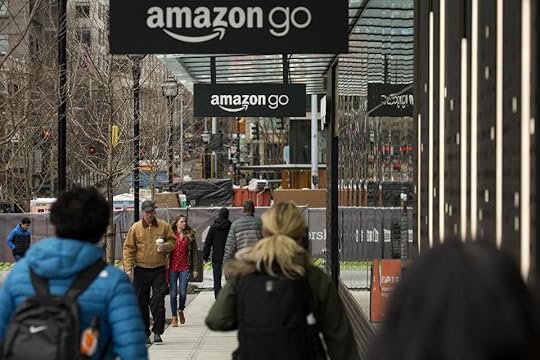 (Photographer: David Ryder/Bloomberg)
(Photographer: David Ryder/Bloomberg)The success and planned expansion of Amazon’s cashier-free Amazon Go stores to other major cities, including New York, is causing competing retailers to address the customer’s need for added convenience and speed. Microsoft reportedly is testing technology that eliminates the pain point of checking out with a cashier. And the Netherlands chain Albert Heijn is expanding a system called “tap to go,” through which customers pat the shelf readers of products they want to buy with branded cards or app-enabled phones.
Meanwhile, in Asia, cashier-free technology has been around since 2017.
There’s much U.S. merchants can learn from these efforts. In particular, that offering shoppers the convenience of breezing out the door without interruption comes with required adjustments, specifically in terms of store formats, selection types and even service.
Amazon Go and Goes
Amazon appears to be confident with its model. Eight months after opening its first Amazon Go store in Seattle, the online retailer plans to expand the cashier-free concept to New York, San Francisco and Chicago. Dates have not yet been set for any of these locations.
While new in the U.S. (Microsoft’s technology is just now being pitched to retailers globally), the grab-and-go format has been in play at stores around the globe since before Amazon tried it. Albert Heijn began testing its tap-to-go service, now targeted for its 80 Albert Heijn To Go convenience stores, in December 2017. Asian merchants have been operating various formats of employee-free shops to the point that it is considered an emerging business model.
Among the concepts, Alibaba back in mid-2017 unveiled Tao Café, a staff-free coffee shop that incorporates online capabilities such as facial recognition. Visitors scan a QR code to a smartphone app to gain access and then place their orders via smartphones.
Elsewhere in China, BingoBox operates a 24-hour, cashier-free convenience store that uses RFID and computer vision to track store items, which shoppers can charge to WeChat, the Chinese mobile payment and messaging app. Similarly, the F5 Future Store operates like a walk-in vending machine where visitors select snacks and small meals on a touch screen, pay through WeChat and then retrieve their purchases from a chute. No employees at all. And the Asian social media operator Tencent has partnered with cashier-less startup EasyGo to open a pop-up shop, also using WeChat for payment.
Learning on the Go
Based on Amazon’s trial and the findings of international players, certain takeaways will likely be considered in the planning of future checkout-free stores, particularly when it comes to balancing a faster trip with the desire for good in-store experiences.
Among the potential issues or kinks these in-play systems address:
1. Product recognition. Amazon executives have pointed out that computers don’t recognize certain products as easily as people do, potentially causing shoppers to wait while an item is being identified. One solution may be to enhance the recognition software, but perhaps an even easier solution will involve working with packaged-goods players to create package designs that are more easily identified by the technology systems. Or it may result in cashier-free store models that require a little more shopper interaction. The Albert Heijn model, which requires that shoppers tap shelf readers with their cards or phones, reduces the chances for product misreads, eliminating friction and keeping shoppers literally in touch with the store brand.
2. Size matters. Amazon’s second Go store in Seattle, which opened in August, is 20% smaller than its first. This reduction is obviously a result of eliminating certain merchandise categories, but why? It may be that these areas caused customer frustration or were ignored (among the categories cut were liquor and an in-store kitchen). As evidenced by the small-format convenience stores in China, size is essential for grab-and-go stores because the trips that encourage these stops are typically small, like a meal or a snack. A large footprint defeats the goal of getting in and out fast.
3. Payment options. Amazon Go requires shoppers to have an account with Amazon, which is automatically charged when they leave. This benefits shoppers who are already members, but the balance of shoppers are in question — they either open an account or never spend a dollar there. The systems in Europe and Asia entail apps. These limitations may work well for Amazon and WeChat because of their ubiquity, but such tight payment options will restrict participation for most other merchants and lead to broader payment options in the future executions. Merchants adding cashier-free stores will benefit if they analyze how their shoppers prefer to pay and choose payment options that align with those preferences.
4. Shoppers still want service. Cashier-free stores may not always be service-free. Amazon Go stores have employees on hand to fix any tech issues that may arise. But workers also should be available to address simple questions, because even robot technology is limited when it comes to troubleshooting particular shopper needs. On-staff employees also are essential for keeping stores clean, orderly, stocked and — ideally — pleasant.
Across these considerations, data will help. Whether in the U.S. or overseas, cashier-free retail models produce tracking insights that should result in more precise understanding of shopper preferences and patterns. These insights could feed decisions and enhance the model, and ideally lead retailers to new shopper-focused concepts.
This article originally appeared in Forbes . Follow me on Facebook and Twitter for more on retail, loyalty and the customer experience.
October 17, 2018
What Shoppers Should Expect From A $15 Hourly Retail Wage
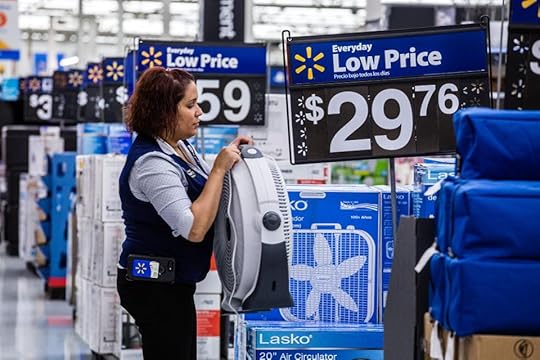
(Photographer: Timothy Fadek/Bloomberg)
How much good service can a shopper expect from a retail worker making $15 an hour? The answer depends on the worker’s experience.
This is what shoppers will likely learn as more retailers raise their workers’ wages. Most recently, Amazon said it will hike its minimum wage to $15, following increases by Target, Walmart, Costco and others that are pushing their pay north of $10. (The federal minimum wage is $7.25.) Among the motivations for the hikes, retailers have said, is attracting and retaining the best talent as well as improving customer service.
But delivering better service really depends on the level of employee experience retailers already have, let alone attract. And that can be a challenging task, as low unemployment rates, combined with seasonal holiday hiring, is making good talent harder to find.
Shoppers evidently do not have high hopes. According to a 2016 survey by Colloquy, which asked 1,500 consumers if they would expect better customer service if the minimum wage were raised to $15 an hour:
– 59% said they should expect better service and overall experience.
– However, 69% said they don’t believe they would receive better service.
Yes, improving the customer experience starts with well-compensated employees, but it requires an adherence to operational principals that extend beyond pay.
Stuck In the Middle
Central to whether pay increases result in better service is how those raises are being applied. Under the new pay structures retailers are announcing, inexperienced workers might make the same as those with a few years of practical service skills.
Economists told the Washington Post that despite requirements that employers pay more than the federal minimum wage in 29 states, those increases are not resulting in higher wages for mid-level workers.
“Poor wage growth has persisted even as we’ve hit 4% unemployment, and that’s particularly true for workers in the middle,” Josh Bivens, director of research at the Economic Policy Institute, a think tank, told the Washington Post.
Those middle workers are more likely to know how to troubleshoot unexpected issues, how to navigate operational hiccups and even recognize shoppers and predict their preferences. The shopper experience, in many ways, is as good as the employee’s experience.
Further, it’s not clear if retailers will cut back on the number of workers they employ overall to cover the cost of paying each worker more. If so, those middle workers, in addition to not getting a pay raise, could find themselves having to do more.
Putting $15 Worth Of Service In A $10 Bag
Consumers likely don’t think of worker pay while on a shopping trip, and they shouldn’t have to. If customers are not treated well, pay is a moot issue. It’s the brand that matters, and they should be treated well regardless of pay and regardless of whether they are spending $10 or $100.
Here are some basic principles for ensuring that worker compensation, whatever it is, pays off for the shopper:
Hire the right people, no matter where. It’s basic, but often retailers overlook their best prospects by not fostering the talent they have in place, and then promoting those workers. Publix, for example, promotes from within to fill all manager positions and most department positions. This is to ensure continuance of its standards and culture. Publix, which is repeatedly rated one of the best places to work, pays its cashiers nearly $10 an hour.
Invest in training. Ever been to a restaurant and the server couldn’t answer a basic question about a menu item? The same type of menu-level training should apply to retail, meaning employees should be familiar with the origin, operations and limitations of the products they sell. Some brands, such as Lowe’s, have furnished their staff with handheld devices so they can locate items on the shelves and review how-to videos. Best Buy, meanwhile, has altered its in-store systems and technologies, based on interviews with hundreds of employees, to smooth customer interactions.
Share data, to a point. Retailers can provide their employees with limited pieces of information to better inform them of common shopper behaviors. Reward program data and credit card data can help managers align their primary goals (for example, higher sales per shopper) with their highest-potential customers, identify those encounters that embody the brand’s value to those shoppers, and then modify employee training and participation to better serve the shoppers at those points.
Free workers to make service choices. Empowerment is among the best ways to foster employee loyalty. When retailers free workers to make at-the-moment judgements about how to improve a customer’s experience, those employees feel a sense of ownership in the brand, and therefore become more invested. Wayfair is among those retailers praised for giving its workers autonomy and encouraging them to take risks, which it supports through resources and trust.
Trust is perhaps the most important benefit a retailer can gives its workers. It is a necessity of loyalty, which can’t be bought. But so is respect, and a wage increase to $15 an hour won’t hurt on that front.
This article originally appeared in Forbes . Follow me on Facebook and Twitter for more on retail, loyalty and the customer experience.
October 9, 2018
Zulily On The Art Of Personalizing The Retail Mobile Experience
From avocados to refrigerators, a lot of purchases are funneled through our smartphones, thanks to the magic of e-commerce. But is the actual experience of buying via mobile going down the tube?

With smartphones projected to generate one-third of retail sales in 2018, shoppers are increasingly expecting one-to-one experiences — the younger ones innately. Yet many retailers are still just in the process of updating their digital presences to accommodate word fonts, colors and related smartphone format issues.
Personalized shopper experiences also should be integral to the mobile presence, advises Kevin Saliba, senior vice president of marketing at Zulily, the deals-focused retail site: “There’s no question mobile is a must,” Saliba said in an email. “As reported by Forrester, smartphones will be used in $1 trillion of total retail sales in 2018 alone.”
Closely following that “must” comes the “how.” Saliba shared some tips for maximizing the retail mobile experience and answered common questions retailers might ask, based on Zulily’s own online participation. Edited excerpts follow.
Q: What is the biggest challenge to mobile retail?
Mobile is a channel in which the work is never finished. The approach and experience must continuously be refined and improved.
The challenge can be evaluated differently dependent on where in the funnel you’re focused. First, retailers must take a step back and understand their mobile goals and reconcile them against long-term strategies and in consideration of the resources they have to accomplish that goal.
Second, the mobile storefront must be optimized for small screens and short attention spans. Retailers need to ensure the experience works seamlessly and ask questions throughout the customer’s touchpoints: Can the customer see the products and understand what they are (and do so easily) in the context of their lives? Is the content curated and captivating to stop a thumb among those few precious scrolls?
Then it’s about cart conversion. Does the checkout experience allow for a purchase without friction? Have you invested in the mobile payment platforms that enable a seamless transaction?
Q: How does Zulily overcome the challenges?
We start with tailored email marketing — entertaining and inspiring content that could include exclusives, app-only offers and/or brands a shopper might want to discover.
In 2018, Zulily rebuilt its mobile push notification program to include highly personalized content and localized send-time changes, ensuring each customer receives relevant push notifications. The result: a 49% year-over-year increase in revenue in the first quarter of 2018.
Finally, we leverage both paid and organic social media platforms to reach more than 5 million fans across Facebook, Instagram and Pinterest. We also invested in Facebook Messenger for customer service, product discovery and as another way to shop. From 2016 to 2017 alone, our Messenger traffic grew year-over-year by 57%.
Q: What was the biggest surprise revealed by shoppers of Zulily?
We found that video can be used as an effective tactic for acquiring customers via direct response ads. When marketers traditionally think of video on mobile, they think of brand-building and entertainment, with goals that involve measuring view time. At Zulily, we found success that goes against that assumption.
We have a real-time feedback loop with our customers, which allows us to iterate and innovate with more specificity to serve them better. For context, earlier this year we realized we needed to focus more on Facebook video ads as that algorithm evolved. We tested and learned what made for successful video ads and high-value customers, working with our machine-learning and data-science teams. We found the most effective ads were dynamic, simple and had a clear call to action.
Our technology has allowed us to increase speed and take advantage of “in the moment” ad opportunities. It’s a critical factor in our ability to scale, especially in video creative, and as a result we’ve seen a 20% improvement in ad spending efficiency and a 67% decrease in the time spent making ads, which allows us to spend more time on channel deployment, efficiencies and optimization.
Q: What are the missed opportunities?
The biggest missed opportunity is not empowering individual team members to make a positive impact in the business.
My marketing team is comprised of six different functions: brand marketing, creative, acquisition, analytics, lifecycle marketing and customer experience — and all are focused on knowing what our customer wants and needs and how to communicate with her in her channel of choice.
The entire team has access to the latest data to drive strategic insights and business decisions. By democratizing the analytics process, these team members are empowered to evolve, improving efficiencies at the quick pace that our business needs to evolve and change.
Q: What do you see as the biggest opportunities in the coming years?
The biggest opportunity for retailers is to capture new generations of shoppers who are increasingly leveraging mobile to build relationships with brands. Gen Z is beginning to have significant buying power as they now number 2 billion globally; it’s imperative that retailers invest in understanding how this generation differs in needs and expectations from millennials, who are simultaneously aging.
Additionally, there is a tremendous opportunity for retailers to reinvent themselves and to create experiences that blur the line between entertainment and commerce. We’re already starting to see social platforms spur changes in buying behavior, but there’s an opportunity to expand and create experiences that are tailor-made for — and could even predict — customer needs and wants.
Q: What essential pieces of advice would you give a retailer to improve its mobile shopping experience?
Once retailers prioritize for mobile, there are three musts:
1) Understand where your customers are and how they want to engage with your brand.
2) Ensure you’re investing in the right technology to serve your customers in their channels of choice in truly personalized ways.
3) Democratize data by breaking down silos and providing your entire team with access to data and insights that fuel real-time strategic decision-making.
•••
Put another way, with $1 trillion in spending coming through our smartphones, retail’s success in mobile hinges on this question: How do you create magic moments?
This article originally appeared in Forbes . Follow me on Facebook and Twitter for more on retail, loyalty and the customer experience.
October 5, 2018
Loyalty In Question: What To Learn From Nordstrom, Victoria’s Secret Rewards Changes
What makes a shopper more loyal? It may be less commitment.
This is one of the takeaways from the revamping of Nordstrom’s loyalty program, The Nordy Club, which doesn’t require members use a Nordstrom credit card to participate. The loosening of rules recognizes that if a retailer wants to keep its shoppers engaged through its loyalty program, then the program has to change.
Nordstrom is not alone in recognizing the reality that if a retailer is to be serious about its loyalty initiative, then it must evolve that proposition along with all other core operations, from merchandising to advertising. Several retailers are updating their programs, in part or in whole, to regain relevance with shoppers. Among them:
Victoria’s Secret upgraded its Pink Nation program aimed for college students to be more community minded. Central to its effort is the launch of a redesigned app that, in addition to offering games and access to exclusive events, is a platform for members to connect with on-campus brand ambassadors. Included will be a tab called “Campus” that serves as a media hub of college life, from dorm-room transitions to cramming for midterms and job searches.
PetSmart’s new app-based loyalty program, cleverly called Treats, rewards members eight points for each dollar spent, plus issues points for using its grooming and other services as well as for donating to PetSmart Charities. Members earn bonus points for activities such as updating their profiles, and get free surprises on their pets’ birthdays (encouraging pet-accompanied in-store visits). Points can be redeemed directly at the register. This layering of benefits is an enrichment that could translate to bigger dividends than points.

A&Fs DO IT IN DENIM launch hosted at MONDRIAN LOS ANGELES, an SBE property
Young adult apparel chain Abercrombie & Fitch is making its year-old loyalty program, the A&F Club, a key component of its plan to regain sales and market share. Specifically, it is using the program as a tool to get closer to its shoppers. In July, the chain partnered with the global hospitality firm SBE, operator of 22 lifestyle hotels including the Mondrian Los Angeles and Redbury New York, to provide Club members access to special benefits at SBE’s properties. For example, Abercrombie & Finch launched its new denim collection at the Mondrian, inviting club members to get a first look at, and try on pieces of, the line. These specialized perks are attracting shoppers — A&F Club counts about 5 million members, and Abercrombie’s loyalty members spend 1.5 to two times more than a non-loyalty member, the company has said.
Nordstrom’s The Nordy Club allows members to pay however they want, which opens up the benefits to those shoppers, many of whom are young, who do not want to apply for a Nordstrom credit card. Members gain higher status the more they spend, and with higher status comes greater rewards, including entry to invitation-only shopping events, exclusive services such as free alterations and access to beauty and style workshops.
None of these changes will resonate with members, however, if they do not respond to (or anticipate) the factors that are altering shopper behaviors in the first place.
80% Want It Now
Key among these behavior-altering factors is the disintegration of the physical advantages that once caused consumers to choose one retailer over another, thanks to the ease of digital shopping. Eight in 10 shoppers are prone to buy whatever it is they need at the moment they see it, regardless of where they are, according to research by WSL Strategic Retail.
This buy-on-the-fly mentality, and freedom, has put rewards programs to the test. Once seen as a distinguishing factor among brands, rewards programs are now as prevalent as shopping websites. They can, however, become tools that attract shoppers from buying “wherever they are” to buying where they feel they get the best value and experience.
Here are three factors retailers have to consider when revamping their loyalty programs — if they want their programs to matter among shoppers.
1. The odds of engagement are against the current loyalty model.
The number of U.S. loyalty program memberships has climbed to 3.8 billion, according to the 2017 COLLOQUY Loyalty Census. Of them, 1.6 billion are in retail. Yet less than half of all programs, 46%, are active. Worse, 28% of reward members dropped a program before redeeming a single point or mile. Members said the programs that keep them engaged are:
• easy to use
• easy to understand
• deliver great, personalized discounts
More than half of those surveyed said they left programs that did not offer rewards of interest, or that required too much time to earn rewards.
2. Loyalty programs that are treated like bolted-on brand features will fail.
Like store planning and merchandising, loyalty programs should be treated as fluid organisms that evolve with shopper needs and preferences. This means operating them like other core components of the overall brand experience. If the merchant launches a shopping app, then the rewards program should be a high-profile assistant in that app. If it introduces new store concepts, perhaps with special services such as cooking classes or styling workshops, the rewards program should include some of those benefits with its perks. And the merchant should keep an eye out for co-brand opportunities its shoppers would love, as Abercrombie has with SBE. Each year the retailer should answer this question: Is our program fresh and compelling enough?
3. “Location, location, location” is no longer a thing.
As that 80% “buy anywhere” figure from WSL Strategic Retail drives home, shopper choices are no longer limited to physical space. Even if the drug store is two doors away from her office, a shopper may still opt to buy lipstick online (and even get it the same day). The elements that will cause her to leave the office, or choose one online brand over another, can be quite small, but they resonate. A rewards perk that is time-sensitive, such as the weekly happy hours Starbucks Rewards offers its members, not only triggers a sense of urgency, it tells the member she is special.
Lastly, if retailers want their loyalty programs to matter to shoppers then they have to commit to them fully and operate them like they are central parts of their overall brand propositions. If a retailer is not that committed, then it should reconsider why it has a loyalty program at all. It’s just likely to become one of 54% that shoppers forget about.
This article originally appeared in Forbes . Follow me on Facebook and Twitter for more on retail, loyalty and the customer experience.
October 2, 2018
5 Ways Kroger’s Investment In Tech And Experience Will Change All Grocery

(Photo credit: Getty Royalty Free)
She may only need a head of lettuce and a gallon of milk, but today’s grocery shopper might as well be browsing for a smartphone or a car.
That’s how competitive the retail industry has become when it comes to capturing the food dollar, and few companies are demonstrating their awareness of this as thoroughly as Kroger. The nation’s largest traditional supermarket chain is investing to meet shopper expectations for better service, experiences, quality and price across various fronts, from in-store dining to robot delivery.
In doing so, Kroger hints at the changes other food retailers — and more importantly, their shoppers — should expect from the supermarket, in convenience, product selection and experience.
Kroger is dedicating so many resources to fulfill its three-year “Restock Kroger” customer service initiative that its short-term performance has suffered. Kroger recently posted quarterly sales that fell slightly below expectations due in part to reduced product prices. It also is increasing technology spending by 200% in 2018.
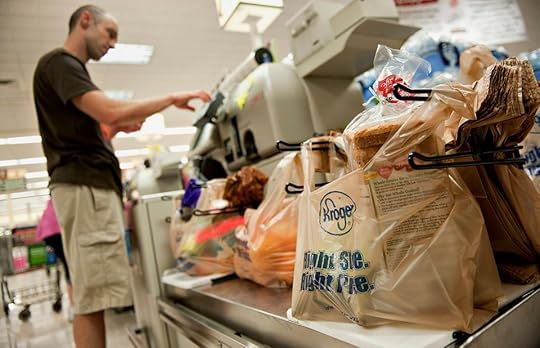
(Photographer: Daniel Acker/Bloomberg)
What’s Eating the Supermarket Dollar?
Kroger has little choice but to make these investments — the food dollar is being portioned off to more and more players.
Total food spending increased 3.7% annually from 1991 to 2014, but sales among food retailers rose just 2.2% annually in that period, according to a 2018 report by retail analytics firm Precima and the marketing intelligence firm IDC. The culprit, in part, is out-of-home eating. Spending on food away from home reached $821 billion in 2017, compared with $818 billion on food eaten in the home, according to the U.S. Department of Agriculture.
Other retailers, from dollar stores to fuel stations (and let’s not forget Amazon), are vying for the food dollar as well. So Kroger has opted to barbecue the entire steer in one grilling. In addition to its ClickList online curbside service, which is available at more than 1,100 locations, it is rolling out its Scan, Bag, Go self-checkout app and one-day delivery by robot cars. It’s opening company-operated restaurants and, on the merchandise front, adding its own private-label clothing line.
And in August Kroger announced plans to open a 2,500-square-foot innovation lab at the University of Cincinnati, its headquarters city. The collaboration is part of a broader effort by Kroger and the city to attract top technical talent to the region.
Redefining the Experience With Tech
In a press release, Chris Hjelm, Kroger executive vice president and chief information officer, said the innovation center — a byproduct of the Restock Kroger plan to optimize the shopping experience through store improvements, digital innovation and talent development — will serve for the company’s technology team to “partner and develop solutions to redefine the grocery customer experience.”
Here are five ways that experience will likely change, and how shoppers should benefit across the industry.
1. Faster, more convenient online shopping. In the spring, Kroger entered into a major deal with British online grocer Ocado Group to build 20 robot-operated facilities to assemble its online orders for delivery. This venture should significantly raise the bar for merchants vying for the online grocery market, which is projected to reach $100 billion by as early as 2022, according to FMI. A good example is Walmart’s grocery pickup kiosks for online orders. Kroger’s Ocado warehouses could manage online orders less expensively, and free up its employees to serve customers.
2. Noteworthy in-store experiences. The Restock Kroger program gets a lot of attention for its focus on digital improvements, but it is equally dedicated to enhancing the in-store proposition through better product assortments, personalization (enabled through data analytics) and featured services. Of note are Kroger’s investments in meal kits (it bought Home Chef in May), fresh foods and company-exclusive eateries, such as its Kitchen 1883. It is likely competitors are watching closely to see if such efforts are worth copying.
3. Better product mix. Kroger’s analytics also will enable it to more accurately select the kinds of products immediate shoppers would like at their stores. This will mean a continuation of regionally specific items as well as more tailored private-label goods. In fact, Kroger’s in-house brands are growing faster than national brands in almost every category, the company said in June. Amazon and other merchants, seeing the margin value of in-store brands, are introducing more of their own, causing shoppers to hit select merchants expressly for favored products.
4. More knowledgeable staff. Kroger’s investment in data analytics talent, as demonstrated with its innovation center in Cincinnati, will result in more accurate marketing and community-specific merchandise. Additionally, Kroger is opening a digital headquarters in downtown Cincinnati and plans to increase its team there to 1,000 from 500. Kroger also is increasing employee benefits and wages, which should result in more knowledgeable employees and more satisfying, even happy, shopper experiences.
5. Better prices. If all of the previous efforts meet their goals, then Kroger’s costs should be reduced through improved operational efficiencies, greater scale and lower employee turnover (and ideally better engagement). Kroger will likely parlay some of these savings into more online and in-store investments, but it also has to compete on price, and any cost reductions will support that.
Importantly, for the shopper, whatever Kroger does will be watched closely by its rivals, even Amazon. If the shopper demands better service, experiences and quality at lower prices, she will likely get it. And in meeting her demands, Kroger and others will also help change the way she shops.
This article originally appeared in Forbes . Follow me on Facebook and Twitter for more on retail, loyalty and the customer experience.
September 28, 2018
4 Ways The Sinking Of Toys R Us Will Transform Toys
The giraffe is out of the toy box, and the hole it has left to fill is not just big; it is limitless.
Limitless in terms of the kinds of new toys that will be introduced as a result of the failing of Toys R Us. Less than two months after the chain closed its doors for good, national retailers including Target, Walmart and even J.C. Penney are plotting their holiday strategies for capturing Geoffrey the Giraffe’s newly available toy dollar.
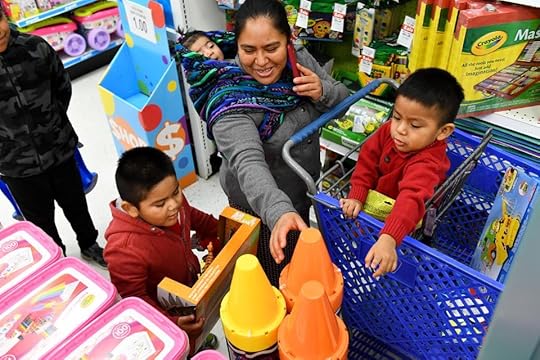
(Photo by Katherine Frey/The Washington Post via Getty Images)
The influence these retailers will have on leading toymakers such as Hasbro, Lego and Mattel will likely determine the toys we find on store shelves and online in holiday seasons to come. Consider that the liquidation of Toys R Us contributed largely to an 11% decline in revenue at Hasbro alone in the first half of 2018, to $1.6 billion from $1.8 billion, the company stated in its quarterly earnings report.
And in a second-quarter earnings conference call, Mattel CEO Ynon Kreiz told investors the potential for Toys R Us market reabsorption by other retailers appears “better than initially anticipated.”
“We’re seeing all of the major retailers stepping in and capturing and taking share,” he said, according to a transcript on Seeking Alpha.
Retailers Aren’t Playing Around
The $21 billion toy industry may look fun on the shelf, but the competition behind the scenes likely is not suitable for children.
Walmart, in its strategic move to claim more of the market, in August announced plans to expand its toy selection by 30% in stores and by 40% online — to include hundreds of new exclusive toys such as the Hot Wheels Ultimate Garage and All Star Hover Board. Also as part of its “America’s Best Toy Shop” holiday strategy, the retailer will host 2,000 in-store theme parties, or “play dates,” that will give shoppers the chance to try out toys, pose for pictures and receive giveaways.
Online, Walmart.com will include toy reviews, recommendations and advice from top toy influencers.
“We are making even bigger investments in the category to ensure we have the widest selection of toys at the best prices and an unmatched in-store and online experience to show customers the best place to shop for toys is Walmart,” Anne Marie Kehoe, Walmart’s U.S. vice president of toys, stated in a press release.
Target is putting up a fight, however, with plans to nearly double its holiday toy selection from 2017, to include more than 2,500 that will be new and exclusive items, it stated in a press release. Online, Target will showcase the top toys of the season by key trends and plans to launch a digital version of its annual kids gifting catalog.
“This holiday season, we’re pulling out all the stops to make Target the ultimate destination for toys, and this curated list of top toys is just the beginning,” Mark Tritton, Target’s executive vice president and chief merchandising officer, stated in the release.
Kohl’s and J.C. Penney are among other retailers that said they will expand their toy sections for the holidays, with Kohl’s planning to add lines from Lego and FAO Schwarz.
4 Reasons Toys Will Change
The disappearance of Toys R Us and the reabsorption of its market share by these mass merchants, supermarkets, department stores and other retailers that do not specialize in toys will likely lead to a reassessment of the toys that make it to the shelf. Walmart, Amazon and Target have more purchasing power than did Toys R Us, and now that they are getting more serious about the category, they’ll likely weigh in with more influence on what products are in the assortment mix.
Here are four ways that could happen.
Reason 1 — Educated Play: Using their own customer insights gathered through loyalty programs, surveys and credit card transactions, retailers may suggest specific types of toys to meet shopper preferences and emerging behaviors. They could ask for representation at toymakers’ concepting tables, where they can share fresh data or submit insights to help guide research and development.
Reason 2 — Action Figuring: The retailers picking up the Toys R Us market share aren’t solely toy destinations, so their toy departments will have to compete not only with those of other retailers, but with different in-store categories, from electronics to candy. Toymakers therefore may jockey for different display spaces within the store, and even online, which also could influence toy R&D (Target, for example, said it is showcasing “trendy toys”).
Reason 3 — One-of-a-Kind Barbie: Major brands such as Target and Walmart are bragging about their large selections of exclusives, which could result in high demand for intentionally limited-edition toys (and follow-up generations). There likely will not be a Walmart greeter Barbie, but the retailer does have an exclusive on the Power Wheels Barbie Dream Camper.
Reason 4 — Monopolied Money: Toys may get more expensive, or not. Target, Amazon and other retailers helped sink Toys R Us by undercutting on price. With Geoffrey out of the picture, these retailers have each other to compete against — on price, selection and even convenience (such as free two-day shipping). That being said, exclusive items could demand higher dollars.
There’s also the chance that major toymakers will step up their own retail operations. Hasbro and Mattel both sell toys online; the idea of them opening pop-up holiday shops or destination stores is not farfetched. The hole Toys R Us left in the $21 billion toy industry is limited only to the imagination.
This article originally appeared in Forbes . Follow me on Facebook and Twitter for more on retail, loyalty and the customer experience.
September 18, 2018
Daredevil Retail: How DSW, Nordstrom And Office Depot Are Experimenting With Experience
Shoe shopping, the pinnacle of retail therapy, is trading in some of its sling-backs and Mary Janes for video tunnels and “shoevators.” This may be when we learn if experiential retail is jumping the shark.
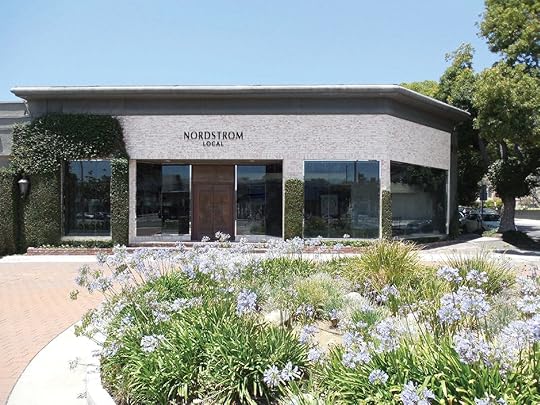
(PRNEWSFOTO/NORDSTROM, INC.)
Experiential retail, which of late has meant experimental retail, has carried the industry into the realm of merchandise-free (or merchandise-light) shops. More major brands, including Nordstrom, Office Depot and DSW, are replacing what would be selling space with activities and services, from clothing alterations to tech support to a vending machine-like shoe retriever.
They have to. With nearly 4,000 stores projected to close in 2018, in addition to a record-breaking 8,000 closures in 2017, retailers must change how they operate at a fundamental level — or risk more operational losses.
But are wow-factor attractions enough to keep shoppers returning? In the increasingly stunt-performance arena of retail, are shoevators and nap nooks mesmerizing enough to generate loyalty, like Evel Knievel did, or are they simply one-act bearded ladies?
The answer resides in how long the experience lives with the customer. A cacophony of experiential retail stimuli could cause shoppers to shut down, much as the overwhelming volume of advertising does. What remains with the consumer are those activities that repeatedly offer value. Case in point: 22% of shoppers are more likely to be loyal to a brand that offers related amenities like personal stylists or a makeover, according to a study by YouGov and Fresh Relevance, cited in Forbes.
From Shoevators to Naptime
But if every retailer offers a makeover, then makeovers are no longer special. So many merchants are testing their creative nerves with more awe-inspiring exploits.
DSW: The deep-discount shoe retailer is testing small-format stores that offer experiences ranging from the practical to the indulgent. At its innovation lab store in Columbus, Ohio, shoppers can access nail bars, repair services and customized shoe insoles. At its store in Las Vegas, it doles out full experiential immersion: Its escalator doubles as a video tunnel, where shoppers can virtually swim underwater, hike the desert or fly over a city. And there’s the shoe-delivery system called the shoevator, through which shoes ordered via in-store kiosk or by app are delivered from storage in an elevator-like lift.
Office Depot: The office supply chain is increasingly catering to the services of its business clients rather than selling ink, pens and other office products, which these clients are buying less. Through its “Workonomy” business platform, it’s providing small and medium businesses technical support, personal advisors and similar services in various forms. Its Workonomy Tech Services kiosks give on-demand access to the company’s installation and consultation support, while its Workonomy Hub is an integrated co-working space. In addition, it offers Workonomy Self-Service Print and Copy kiosks and Workonomy Pack and Ship services.
Nordstrom: The Seattle-based department store chain, known for white-glove service, is among the first merchants to take a gamble on replacing inventory with activity. Its Nordstrom Local concept in Los Angeles invites customers to gather and socialize over glasses of wine or beer, get a manicure and meet with personal stylists. There are also luxurious dressing rooms shoppers can use to try on outfits they ordered online — the shop also serves as an order pickup location. If the clothing doesn’t fit, a tailor is on hand to make the alterations on site.
Joann: The sewing and fabric chain in early summer opened a concept store that’s lined up a bunch of features: a creators’ studio for classes and social events; touchscreen kiosks showing Pinterest craft projects, with instructions, that can be personalized by user; and a service called Sew & Go, through which customers can hand off their projects to seamstresses. Joann also offers professional crafters the chance to share experiences with shoppers by live-streaming in-store classes online.
Casper Mattresses: The pop-out-of-a-box mattress seller, which is largely online but also sells through Target, is going for king-sized experiences through its Manhattan sleep center, called the Dreamery. Here, for $25, sleepy consumers and commuters nap on its products in one of nine Casper Nooks, and awaken to fresh skin-care samples and coffee (pajamas also are offered for the nap). The mattresses are not for sale, but a showroom is right next door.
What Flies, and What May Flop
Some of these ideas will clear relevance hurdles with ease; others, like a bearded lady, might only attract oglers. A combination of both may work best, though the investment would have to prove itself. Generally speaking, here’s what history has taught us will and won’t work in experiential retail.
Give these an applause: The experiential attractions most likely to resonate are those that respond to a growing need that is becoming commonplace in today’s blended online-offline shopping pastime. Office Depot and Nordstrom have simply recalibrated to meet how their shoppers’ needs have changed based on external factors. In Office Depot’s case, reliance on computers and therefore digital records has diminished the need for paper, staples and the like. Nordstrom, recognizing that online sales represent a growing percentage of total revenue (29% in the first quarter of 2018), is likely betting that its shop-free spots, where orders can be picked up and altered, will stimulate more online purchases.
Give these the hook: Experiential investments that diminish in excitement after the first encounter may pay off in high-volume locations, like Manhattan or Las Vegas, but not elsewhere. For this reason, DSW’s video tunnels and shoevators may work well on the bustling Vegas Strip, where sensory overload is a way of life. The merchant is smart to put its more sensible shoe repair and insole services in Ohio. But does location alone ensure that Casper’s Dreamery will thrive in busy Manhattan? We’ll have to sleep on that one.
Somewhere between applause and the hook is Joann, offering expressly the kinds of attractions its customers enjoy. Its success depends on whether its shoppers will repeatedly get in their cars so they can partake in crafts in its social settings at the store. With several of its experiential features online, one might just choose to livestream classes or post their crafts on Pinterest from home.
Common among all of these merchants is that their efforts rely on the buildup of community — a crowd. Isn’t that what every daredevil attracts?
This article originally appeared in Forbes . Follow me on Facebook and Twitter for more on retail, loyalty and the customer experience.
September 15, 2018
Giving The Thumbs-Down To Fake Reviews, In 6 Ways
“I love this amazing smoky-gray jacket. I wore it to a party in SoHo and many people commented on its waterfall buttons and jet pocket treatments. I recommend this wonderful product to anybody who wants to treat themselves and look sharp!”
Real or fake?
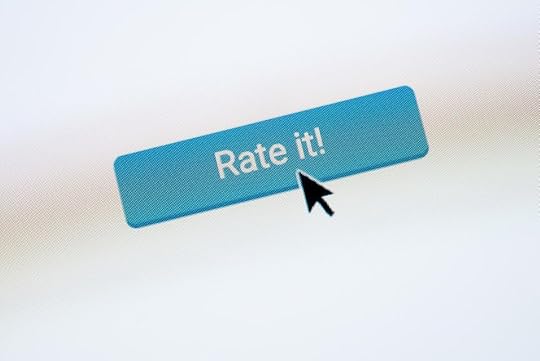
If you’re Jeff Sakasegawa, the trust and safety architect of the fraud detection company Sift Science, this fictionalized product review would likely be just that: not real. And it’s among a significant number. An estimated 16% of Yelp reviews are phony, according to research by the Harvard Business School. Gartner research estimated up to 15% of social commentaries were falsified in 2014, the most recent year for research.
And many of these ratings writers, of both the good and bad, are professional-level serious about it.
“Fake reviewers are psychological warriors,” Sakasegawa said in an email. “Many of them spend a good amount of time building their on-site reputations by leaving multiple legitimate reviews before attacking a site with a fake review.”
There’s a cottage industry cropping up around the practice: People who describe themselves as marketers offer instruction on how to generate fake appraisals, and there are digital marketplaces, such as private Facebook groups or Reddit forums, where fraud reviews can be bought and sold. One teenager told National Public Radio he makes $200 a month writing five-star, faux recommendations.
Buyer Be Wary
This matters to the average consumer because 93% of people first read assessments before deciding whether to shop with a company. In doing so, they risk becoming pawns in a less-than-ethical game wherein that company (or third parties) plant fake critiques to drum up sales or to steal business from another company, the latter of which is often accomplished by attacking a competitor’s reputation or products.
“It’s not unusual for rival businesses to get caught in a negative review cold war, posting nasty reviews of each other to drive away would-be customers,” Sakasegawa said.
Among the harmful byproducts of this practice is that false appraisals threaten the integrity of genuine ones, and therefore of genuinely good products and companies. How can consumers tell the difference? Sakasegawa offers six signs that hint at whether that product review is a fake or the real deal.
• They send you elsewhere. If a reviewer of a product, say vitamins, uses the platform to advocate for or link to a different product (Super Vitamins!), don’t trust the writer. There’s a chance he or she is getting compensated for the referral or may even work for the other brand.
• They rapid-fire. Because many sham reviewers are paid, they tend to post in batches. If the same person posts multiple writeups within minutes or seconds of one another, he or she is likely posting fakes. (More on how to tell how frequently a reviewer posts follows.)
• They embellish. If a product assessment is hyperspecific — long, winding and lavished with hyperbolic adjectives and descriptors — it’s probably a phony. Along the same lines, dummy reviews tend to carry more verbs than nouns.
• They’re extreme. Posters who fictionalize product ratings don’t waste time on nuance; they tend to rely on heavy language, with a propensity toward words such as hate, despise, loathe, love, adore and worship, Sakasegawa said. Honest reviewers, including those who really do like that smoky-gray jacket, or who hate it, are inclined to speak in pros and cons.
• They like jargon. Reviews that are peppered with industry-specific lingo (“subtle pointelle apparel treatments”; “high-quality, energy-efficient washer”) are probably not real. The reviewer may simply be recycling a product description.
• They repeat certain words. Two of the most overused words in fake reviews are “treat” and “recommend,” Sakasegawa said, citing Google Analytics. That being said, the use of these common words alone doesn’t assure a review is false; it’s a good idea to see if one or more of the other hints applies as well.
Thumbs-Up Advice
If consumers still can’t tell whether a retail review can be trusted, here are a few additional steps that should help.
Check the reviewer’s profile. In addition to providing basic information about the reviewer, it will include his or her previous posts, as well as the dates and times they ran. This will make it easy to detect patterns, recycled language and suspicious behavior.
Seek contrast. Consumers should compare the reviews they read online with the critiques they would write themselves, as well as with a variety of other reviews of the same product. If the language is unnatural, or just doesn’t pass the smell test, readers should move on to the next appraisal.
When in doubt, sniff it out. The fake-review industry has helped develop a spin-off network of sites that “smell-test” product rankings with technology. Of the several sites that analyze and/or use algorithms to determine the authenticity of product assessments, Sakasegawa recommends Trustwerty, Fakespot, and ReviewMeta.
Lastly, online shoppers can help improve the trustworthiness of product reviews by contributing their own honest ratings and writeups. This will help dilute the proportion of shams, support good businesses and help out other shoppers.
And if the reviewer really does love waterfall buttons, it may make the review more believable to explain what they are.
This article originally appeared in Forbes . Follow me on Facebook and Twitter for more on retail, loyalty and the customer experience.
August 28, 2018
J.Crew Rewards Is Tailored To Personalize — Is That Enough?
It’s still preppy, but it’s not personal.

Photographer: Brent Lewin/Bloomberg
That could be the synopsis of the challenges facing apparel chain J.Crew Group these days, based on the reasoning behind its new loyalty program, J.Crew Rewards. The all-American brand, which built its reputation on high-quality, classic styles for a creative and affluent (or creatively affluent) customer base, has launched the credit card–free program so anyone can access its rewards. And this, in turn, wil provide J.Crew with more data so it can better understand its well-heeled market.
Much rides on the effort. J.Crew’s once-solid market base is diminishing in numbers and the company is mired in debt. The retailer has posted 13 consecutive quarters of sales declines. In 2017, it reported a net loss of $125 million, compared with a loss of $23.5 million in 2016.
So J.Crew is turning to an expanded loyalty proposition, and more accurately the shopper data it will provide, to deliver more personalized promotions and experiences to its customers. Members can pay however they want, with or without a J.Crew credit card.
“There’s a real emphasis now at J.Crew on personalized engagement versus just site-wide promotion,” President and Chief Experience Officer Adam Brotman told Fortune. “This is laying the groundwork for that.”
But is personalization enough to bring back disillusioned brand fans? It is important, but J.Crew Rewards will require several other elements to save the brand.
From Devotion to Departure
An irony is that if J.Crew’s customers hadn’t been so devoted, they might have been more forgiving.
The brand had gained a near-cult following in the ’90s by elevating mere fashion to a lifestyle. One didn’t simply wear J.Crew, she or he was defined by it. Its camel-brown “Regent” blazer carried the workday into the evening with aplomb, winning the office’s biggest account and then making a splash at the art gallery opening (combined, of course, with the “perfect” linen shirt).
But financial issues emerged after J.Crew went private in 2011 with the help of private equity firms TPG Capital LP and Leonard Green & Partners. The $3 billion leveraged buyout sunk the company in debt — $1.7 billion in 2018.
This hamstrung J.Crew’s efforts to compete against low-priced competitors like Zara and niched online upstarts. Further, Crew fans did not care for its new styles, which at times seemed directionless and inconsistent, and shoppers complained the quality suffered.
J.Crew responded in part with regular price discounts, which trained shoppers to expect them. Its rewards program apparently was created to undo that conditioning, by replacing storewide promotions with more tailored offers.
Still, a loyalty program alone is not likely to save a brand.
4 Loyalty Essentials for Revival
A loyalty initiative is an effective tool to reinforce the qualities of a brand while it is on the mend, however. This is what J.Crew may be aspiring to, given the launch of the new payment-agnostic rewards. Following are four essentials the program requires to help revive J.Crew.
1. It makes the best use of data. When shoppers share data, they do so with the expectation that they will receive something of equal or greater value in return. This means J.Crew is accountable for the data it collects.
It would best account for that data by looking at it from the viewpoint of its customers, so it could base its decisions on what is important to them. In this respect, the addition of a payment-neutral program should be helpful, because it could enable J.Crew to layer the rewards program insights (because each member carries a unique identifier — a membership number) with those of its credit card. This assumes that J.Crew will align the rewards program insights with those already collected through its credit card program.
Generally, the biggest mistake retailers make when launching rewards programs is not determining what to do with the data — in particular, how to use it to benefit their customer. Fortunately, J.Crew already recognized the value the rewards data can bring to it, given the experience it has from using its credit card portfolio.
2. It creates and supports relevance. Data enables relevancy in terms of providing accuracy, but relevancy can only be achieved through authenticity. It occurs when a brand connects with its customers through communications that show it knows who its customers are and what they care about.
This goes beyond merely rewarding points and delivering promotions. Context and content are critical. Content can be tailored by segmenting customers based on purchase patterns and behavioral motivations — what the consumer has responded to before — and then creating messaging for each. The preferred channels through which the messages are extended, the context, can be adjusted by sending the offers at times most likely to capture awareness. Visual elements (children, an office) also can be changed to reflect specific life stages.
3. It gets emotional buy-in. This is where relevancy leads — to emotional loyalty. Think of what caused shoppers to love J.Crew from the start. It aligned with their aspirations and values, it had a distinct style and it offered a level of esteem. It didn’t matter if other retailers offered less-expensive alternatives; J.Crew embodied what was emotionally important to its shoppers.
Experience is crucial to achieving emotional loyalty, which J.Crew plans to accomplish with more personalized offers. To succeed, it will have to assign value to each customer’s preferences, even dreams, and then prove itself by sending offers and information that speak to those preferences, on a timely basis, without being abusive. Gaining emotional loyalty is a matter of gaining trust.
4. It enrolls employee help. Emotional loyalty is more likely to be achieved when all departments of the company, including at the store level, are encouraged to participate. It takes employee engagement to master shopper engagement, and any brand that thinks otherwise is fooling itself.
Among the best ways to ignite employee passion is by empowering them to make choices that improve the customer experience. Often, this means providing them with information to make better-informed decisions in real time. Department heads with access to the data can identify those employee encounters most likely to define the brand’s value among its fans and encourage activities to ensure these moments.
These four principles, in conjunction, accomplish what is essential to any retailer’s survival: They place the customer at the center of the brand’s purpose. When in the customer’s orbit, the brand has the full perspective to base every decision on what matters to that consumer at the time, whether it’s being preppy, professional or just lounging in linen.
This article originally appeared in Forbes . Follow me on Facebook and Twitter for more on retail, loyalty and the customer experience.
Bryan Pearson's Blog
- Bryan Pearson's profile
- 4 followers



